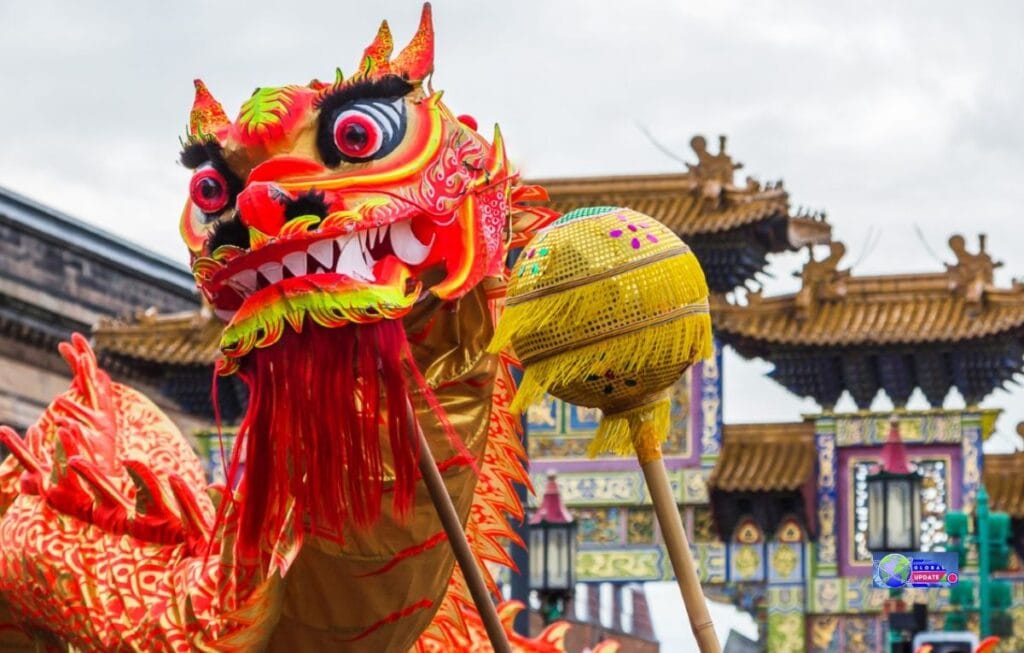The Spring Festival, often called the Lunar New Year or Chinese New Year, is one of China’s most vital and widely celebrated holidays. According to traditional customs, this celebration affects all Chinese individuals and their cultural history.
It marks the beginning of the new lunar calendar year while bringing people together in a spirit of happiness, reunion, and regeneration.
Origins and Importance in History
Between 1600 and 1046 BC, the Shang Dynasty originated from the Chinese New Year, over 3,000 years old. The festival was historically connected to agricultural cycles and celebrated spring and the regeneration of life.
Folklore claims the festival was created to ward off a mythical creature called “Nian,” which would frighten villagers. Later, it was understood that loud noises, bright lights, and even red may scare the beast. That’s why fireworks, lanterns, and red decorations were created—all customs still practiced today.
The festival became even more organized, with the rites performed to honor the ancestors and gods during the Han Dynasty (206 BC-220 AD). Other dynasties added to this custom by having performances, temple fairs, and symbolic meals. The festival is still relevant in Chinese culture, combined with traditional practice and modern festivity.
Traditional Customs and Practices
The Chinese New Year is observed through ceremonies that symbolize family values, prosperity, and good fortune. Though the customs differ from place to region, all these aspects show how important togetherness and promising beginnings are.
Most people prepare for the Chinese New Year by cleaning, decorating, and purchasing. Every ritual has a symbolic meaning: to bring good luck and protect against bad luck.
1. Dinners for Reunions
The reunion supper, which takes place the night before the New Year, is one of the most beloved parts of the event. Families come together from near and far to enjoy an elaborate feast with significant delicacies.
Dumplings (Jiaozi): A symbol of wealth and success.
Fish (Yu): Represents prosperity and good fortune.
Glutinous Rice Cake (Nian Gao) symbolizes achievement and growth.
Spring Rolls: They represent prosperity because of their gold-bar-like appearance.
The reunion dinner is a lavish feast and time to bond even closer with families and express gratefulness for each other.
2. Red Envelopes, also known as Hongbao
Giving red envelopes (Hongbao) loaded with money is a significant ritual during Chinese New Year. Older family members provide these envelopes to youngsters and younger family members as a sign of blessing and prosperity. The amount is typically an even number because odd numbers are linked to funerals.
3. Fireworks and Lion Dances
Fireworks and firecrackers are integral to the festivities as they ward off evil spirits and bring luck. Major cities organize fireworks in large-scale displays, and lion and dragon dances with drumbeats create an atmosphere of celebration. These acts are believed to give strength, courage, and success.
4. Cleaning and Decorating the House
Families are said to eliminate bad luck by cleaning their homes before the celebration begins. Households and the streets are even decorated with red items, consisting of couplets with good-luck sayings, paper cutouts, and lanterns. The color red symbolizes joy and repels evil energies.
5. Honoring and paying a visit
During these 15 days, people visit their friends and family and wish each other such salutations as “Gong Xi Fa Cai, ” which means Wishing you prosperity. Besides all this, a considerable portion of the ceremonies is to pay respects to the elders and ancestors through sacrifices and prayers.
The Animals of the Chinese Zodiac and New Year
The Chinese zodiac has 12 animals, and each year of the Chinese New Year is represented by one of them. The cycle repeats every 12 years. It is believed that these animals—rats, oxen, tigers, rabbits, dragons, snakes, horses, goats, monkeys, roosters, dogs, and pigs—influence people’s personalities and fortunes.
For example:
The Year of the Dragon symbolizes power, wisdom, and ambition.
Chinese, the Year of the Rabbit symbolizes gentleness, grace, and benevolence.
The Year of the Tiger has been associated with bravery, strength, and competitiveness.
Many consider their zodiac sign when it comes to major life choices, such as choosing a career or getting married.
Modern Festivities and International Influence
Over the years, the celebration of the Chinese New Year has evolved from traditional to modern. During the Spring Festival, people move massively to their hometowns for family reunions in modern-day Chinese society. This is called “Chunyun,” or the Spring Festival Travel Rush. Large cities like Beijing, Shanghai, and Guangzhou have grand parades, concerts, and cultural events.
The celebration occurs in various countries with sizable Chinese populations, such as Singapore, Malaysia, Indonesia, the United States, and China. Among its many global sites are massive parades of lion dances and fireworks and people performing on the street in cities such as San Francisco, London, and Sydney. This festival is quite popular worldwide, consequently affecting other cultures’ celebrations.
Culinary Meanings and Uncommon Delicacies
Food is part and parcel of Chinese New Year celebrations. The meaning behind each dish was quite fascinating:
Long Life Noodles indicates life is to be lived to its fullest and long.
Tangyuan, or sweet rice balls, for unity and family bonding
Mandarins and oranges symbolize riches and prosperity
Steamed chicken: Represents family bonding and new starts
Lantern Festival: The Grand Finale
The Lantern Festival (Yuanxiao Jie) is celebrated on the 15th and final day of the Chinese New Year. The following are included in the celebrations:
Lantern Displays: Streets, parks, and homes are lit up by colorful lanterns.
Lantern Riddles: People solve riddles written on lanterns for enjoyment and prizes.
Dragon Dances: Traditional dragon dances are said to bring good fortune and wealth.
Eating Yuanxiao or Sweet Rice Dumplings: Family reunion and harmony
The Lantern Festival is also a joyful finale for the New Year celebrations. It brings families and communities together through festivities and renewal.
Brilliant lanterns light up the night, and people stuff their mouths with Tangyuan (混汤圆), traditional rice cakes whose round shape symbolizes wholeness.

Regional Difference
The festival is seen everywhere in China. But each place has its unique customs:
Northern Chinese people love to have dumplings.
Southern Chinese people love to have sweet, sticky rice balls and rice cakes.
Hong Kong and Macau: The festivities include stunning fireworks over Victoria Harbour.
Taiwan: The Pingxi Sky Lantern Festival is popular.
Conclusion
The Chinese New Year is no longer a festival but an ancient custom that combines cultural history, family values, and future ambitions. Its long history, the significance of tradition, and worldwide impact are integral to what it means to be Chinese. The spirit of the Lunar New Year is a great force that unites people in joy, thanksgiving, and optimism for the new year, whether in China or around the world.
Keep on Reading:
- Tourism flourishes in Macao during Chinese New Year holiday
- Celebrating World Earth Day 2024: A Call to Action for a Sustainable Future



